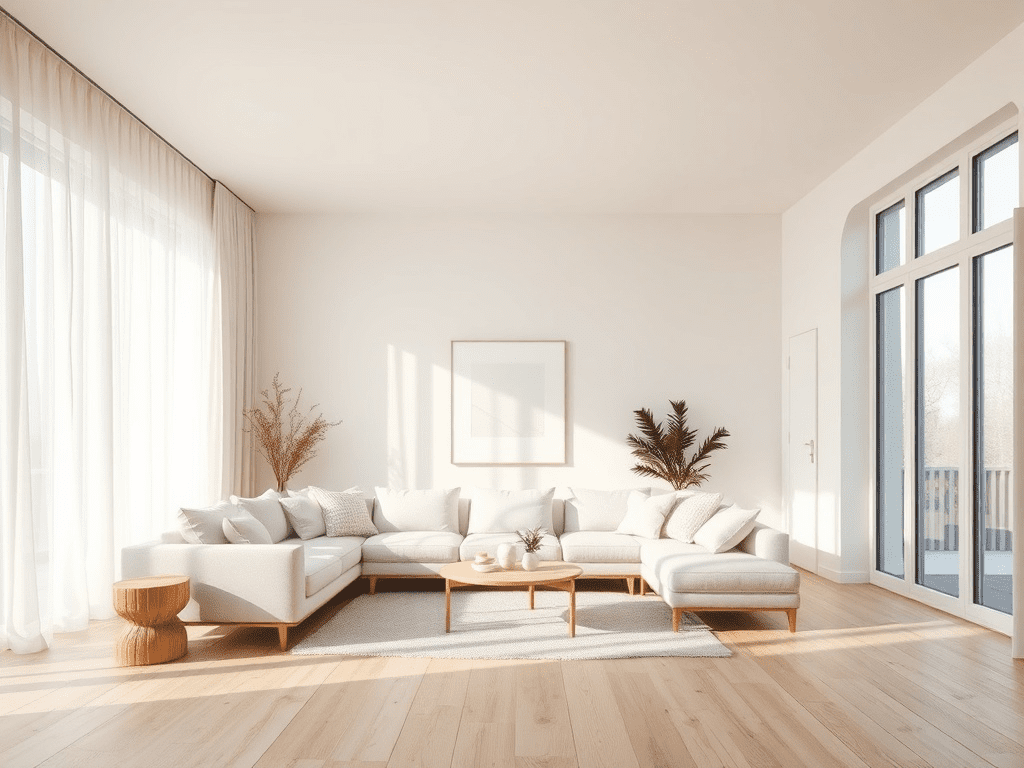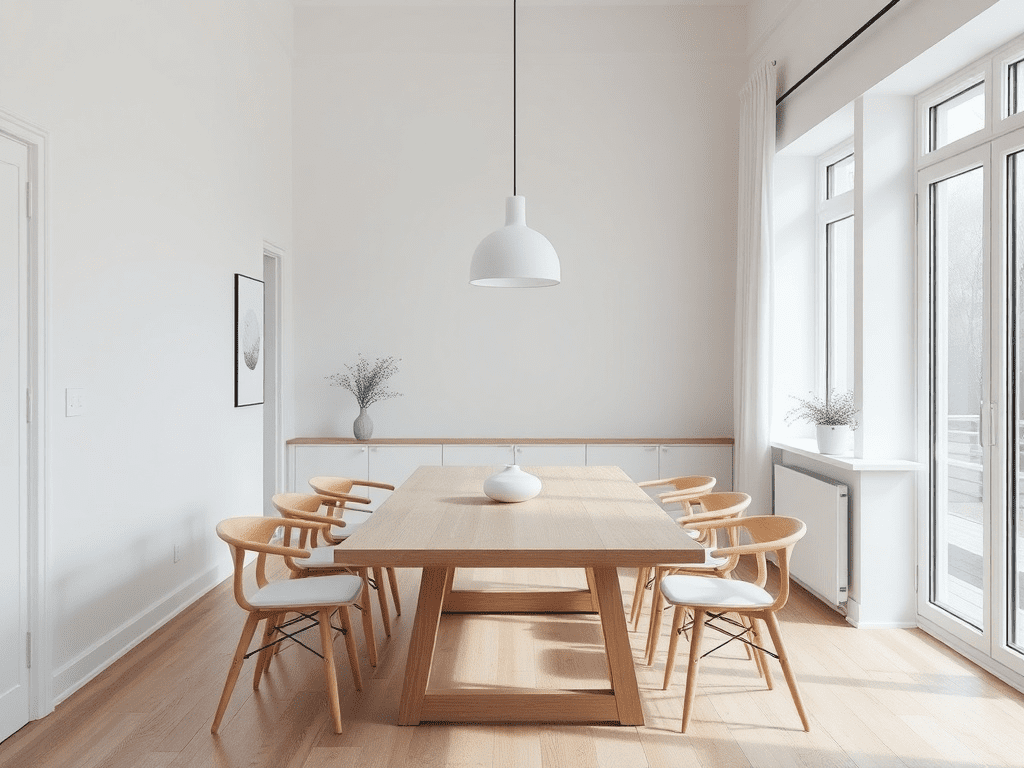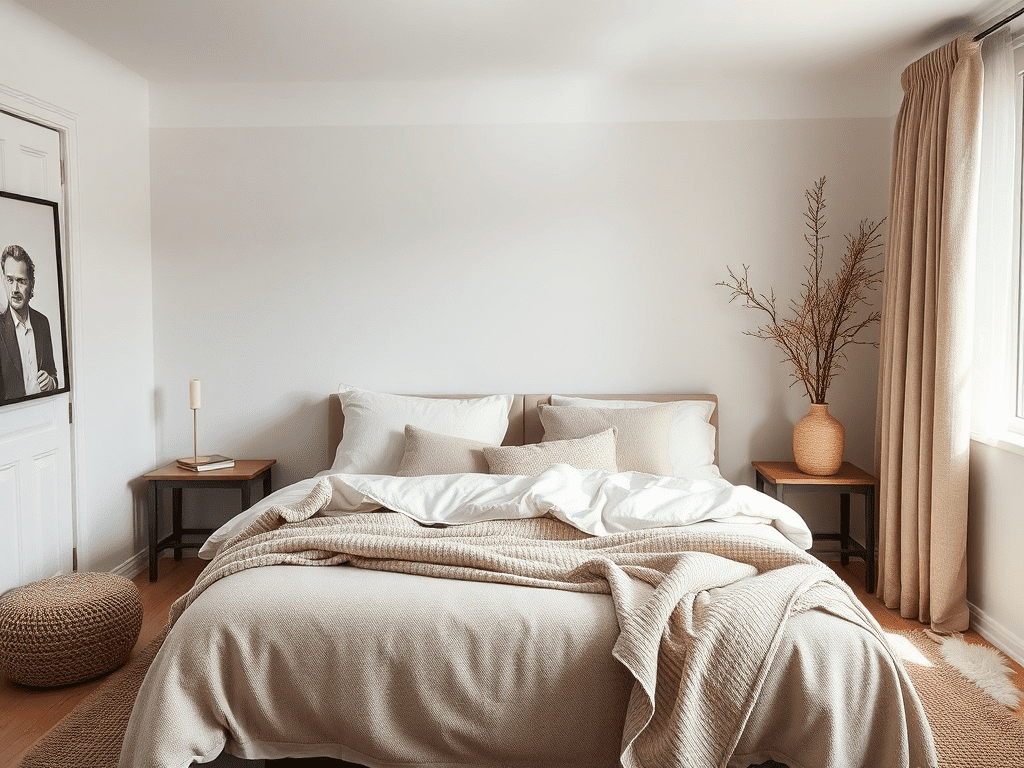Discover the transformative power of Scandinavian interior design principles, a philosophy that blends simplicity, functionality, and natural beauty to create serene and inviting living spaces. Rooted in the Nordic countries, this design approach emphasizes clean lines, natural light, and a calming color palette to enhance well-being and create a sense of hygge, that feeling of cozy contentment. Whether you’re decorating a small apartment or a modern home, understanding these key elements can help you create a stylish and comfortable sanctuary.

At its core, Scandinavian design revolves around several key concepts. These include minimalism, functionality, natural light, natural materials, and a neutral color palette. The overall goal is to create spaces that are both beautiful and practical, promoting a sense of calm and well-being. Let’s delve deeper into each of these elements:
Minimalism: Less is More
Minimalism is a cornerstone of Scandinavian design. Decluttering your space and focusing on essential items is crucial. Choose furniture and décor with clean lines and avoid unnecessary ornamentation. This approach not only creates a more visually appealing space but also reduces stress and promotes a sense of calm. This approach makes scandinavian interior design principles for small apartments ideal.
Functionality: Design with Purpose
Every element in a Scandinavian-inspired space should serve a purpose. Furniture should be comfortable and practical, and décor should be both beautiful and functional. Think storage solutions that are both stylish and efficient, and multi-functional furniture that maximizes space. How to implement scandinavian interior design principles for functionality is important for any home.
Natural Light: Illuminating Spaces
In the Nordic countries, where winters are long and dark, natural light is highly valued. Maximize natural light by using light-colored window coverings or leaving windows bare. Incorporate mirrors to reflect light and brighten up dark corners. The importance of natural light in scandinavian design cannot be overstated, contributing to a brighter and more inviting atmosphere.

Natural Materials: Embracing Nature
Wood is a primary material in Scandinavian design, used for flooring, furniture, and décor. Other natural materials like linen, wool, and cotton are also common. These materials add warmth and texture to a space, creating a connection to nature. Sustainable materials in scandinavian interior design are increasingly popular, reflecting a commitment to environmental responsibility.
Neutral Color Palette: A Calming Backdrop
Scandinavian design typically features a neutral color palette, with white, gray, and beige as the dominant colors. These colors create a sense of calm and serenity. Accent colors, such as blues, greens, and yellows, can be added sparingly to add pops of interest. Scandinavian interior design principles color palettes often reflect the natural landscape of the Nordic countries.
Now that you understand the key elements, let’s explore how you can apply Scandinavian interior design principles to your own home.
Scandinavian design is particularly well-suited for small spaces. By focusing on minimalism, functionality, and natural light, you can create a space that feels both spacious and comfortable. Use light colors to make the space feel larger, and choose furniture that is both stylish and space-saving. This is a great approach to scandinavian interior design principles for apartments.
To create a cozy Scandinavian home, incorporate soft textiles like wool blankets, sheepskin rugs, and linen curtains. Add candles and other sources of warm light to create a relaxing atmosphere. The role of texture in scandinavian interior design is crucial for adding warmth and visual interest.
Scandinavian design can be easily combined with other styles, such as mid-century modern or industrial. The key is to maintain the core principles of minimalism, functionality, and natural light. Combining scandinavian design with other styles can create a unique and personalized look.
Focus on decluttering, DIY projects, and affordable furniture options from retailers like IKEA. Prioritize natural light and simple, inexpensive décor.
Use a neutral color palette, natural materials like wood and linen, and minimal furniture. Focus on creating a calming and relaxing atmosphere.
Maximize natural light by using light-colored window coverings, mirrors, and light-colored walls. Avoid heavy curtains and dark colors.
Incorporate soft textiles, warm lighting, and natural elements like plants and wood. Create a sense of hygge by adding personal touches and creating a relaxing atmosphere.

Conclusion
Scandinavian interior design principles offer a timeless and versatile approach to creating beautiful and functional living spaces. By embracing minimalism, functionality, natural light, and natural materials, you can transform your home into a serene and inviting sanctuary. Whether you’re decorating a small apartment or a modern home, these principles can help you create a space that reflects your personal style and promotes well-being. Remember the the key elements of scandinavian interior design principles explained can be applied to any home and any style.
| Principle | Description | Application |
|---|---|---|
| Minimalism | Focus on essential items and decluttering. | Choose furniture with clean lines and avoid unnecessary ornamentation. |
| Functionality | Every element should serve a purpose. | Choose furniture that is comfortable and practical, and décor that is both beautiful and functional. |
| Natural Light | Maximize natural light. | Use light-colored window coverings or leave windows bare. Incorporate mirrors to reflect light. |
| Natural Materials | Embrace natural materials like wood, linen, and wool. | Use wood for flooring, furniture, and décor. Incorporate linen, wool, and cotton for textiles. |
| Neutral Color Palette | Use a calming color palette of white, gray, and beige. | Use white, gray, and beige as the dominant colors. Add accent colors sparingly to add pops of interest. |
By using these principles you can avoid common mistakes in applying scandinavian interior design, such as over cluttering a room, not utilizing natural light, or using the wrong colour pallets.
For more inspiration and guidance, explore resources like Elle Decor for stunning examples, or delve into the history and philosophy at Scandinavian Design.com. Also, Architectural Digest offers expert insights into current trends and adaptations.
